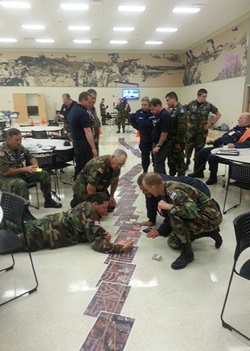
State officials in Oklahoma confirmed 24 people, including 10 children, lost their lives as a massive tornado ripped through Oklahoma City and its suburbs on May 20. Moore, Okla., a suburb 11 miles south, was particularly hard-hit. Disaster relief organizations rallied to assist those in the path of a storm that was unusually large and destructive, even in a region accustomed to powerful tornadoes.
The FAA confirmed to AOPA Live This Week that an FAA employee was among those lost.
The National Weather Service concluded that winds peaked around 210 mph, rating the storm an EF-5, the top of the scale. The tornado cut a 17-mile swath of destruction, flattening homes, businesses. and schools. Local media including the Oklahoman newspaper reported many similarities to a tornado that killed 44 people in 1999.
The FAA on May 20 implemented a temporary flight restriction at the request of local police, with a 3-nautical-mile radius from the surface to 3,000 feet agl, southeast of Will Rogers World Airport. An FAA spokesman said local police requested the restriction on May 20 because low-flying aircraft were making it impossible for rescue crews to hear victims who might be trapped in rubble.
Civil Air Patrol wings based in Oklahoma and Kansas deployed air and ground teams, more than 100 volunteers in all, to assist Oklahoma and federal officials with damage assessment. The CAP conducted several flights over the tornado’s path, photographing the destruction, while its ground teams went block by block, documenting destruction of homes. State officials reported 2,400 homes had been destroyed. Debris was scattered more than three miles from the storm’s two-mile-wide path.
“The damage is difficult to see and process,” said Maj. Sam Ory, CAP ground team leader for the initial response. “Before you get here and witness it, you really can’t imagine a storm causing this destruction.”
AERObridge, the nonprofit organization that coordinates general aviation disaster relief efforts, opted not to activate, noting that the affected areas remain accessible by road. The newspaper listed several organizations that were operating in the region, and accepting donations.
The nonprofit Sky Hope Network, which coordinates emergency medical and other services by business aviation, announced a donation drive through June 1 that will directly benefit storm victims who work in the aviation field, noting that Oklahoma City is home to several aircraft title and escrow firms, along with various FBOs and other aviation concerns, and dozens of people who staff those companies have suffered significant losses. The donation drive was quickly arranged following discussion on social media.
“All of us are saddened by the loss of life and destruction in Oklahoma. As always, the general aviation community stands ready to assist in any way possible,” said AOPA President Craig Fuller. “In the meantime, it is vital that we all pay close attention to notams and other advisories so that emergency personnel can continue their important work.”
The FAA reported no damage to airports, facilities, or navaids in the region.



